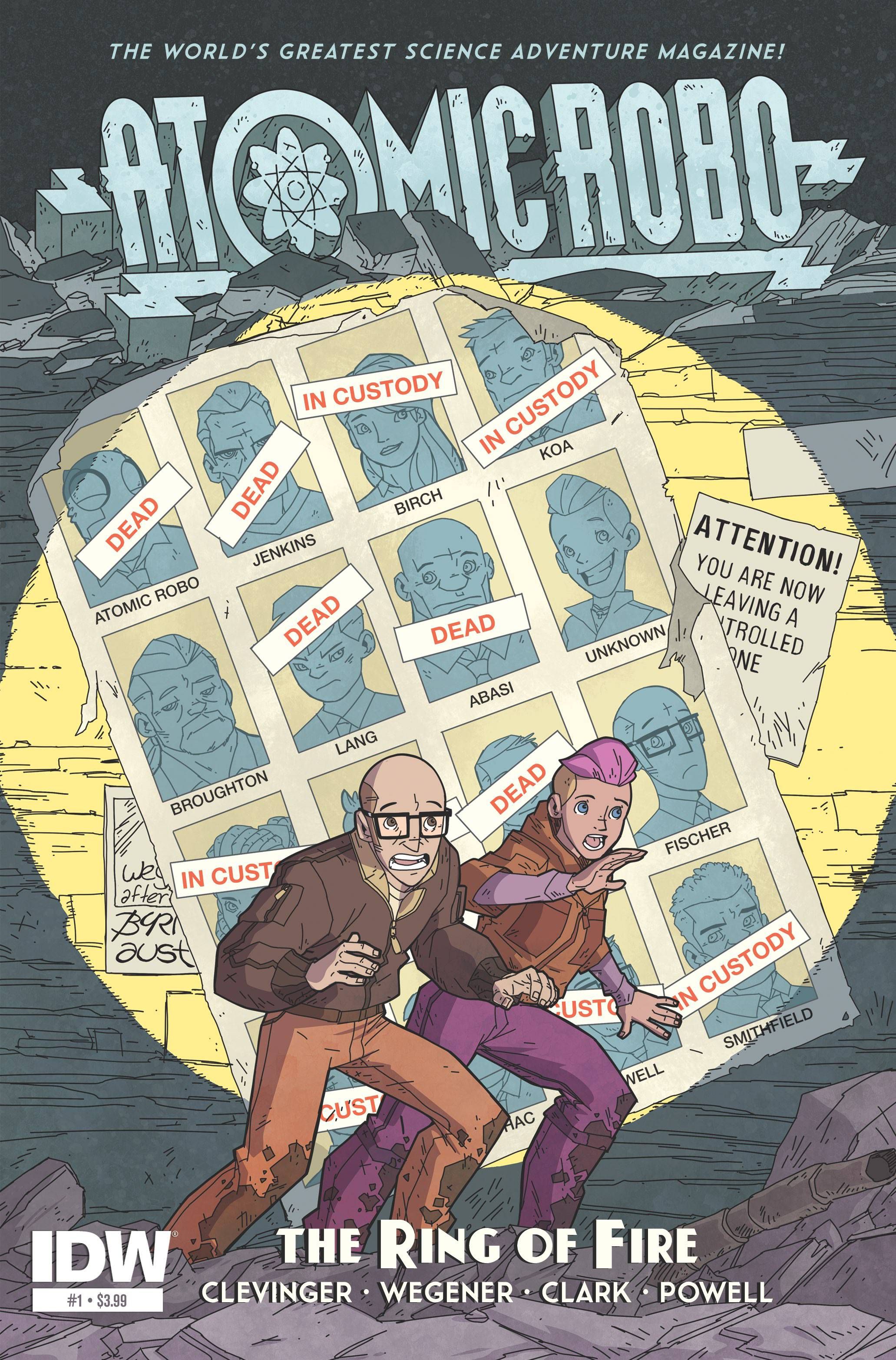In Brian Clevinger and Scott Wegener's "Atomic Robo and The Ring of Fire" #1, the Action Scientists have a plan to find Robo, who went time-travelling in 1884 in "Atomic Robo and the Knights of the Golden Circle." Clevinger and Wegener move their series over to IDW with this debut issue, opening the characters up to a new readership in a strong first installment.
As in all previous "Atomic Robo" series, Wegener's linework is clear, deceptively simple and cheerful, with a great sense of three-dimensional space in all the backgrounds. Anthony Clark's colors are at their best in the chase sequence, where his light trails for flashlights and drones look beautiful and add a lot of excitement to the action. However, his subdued, muddy palette in other scenes makes the action look duller and flatter, and the lack of hue variation is especially noticeable in the Rio de Janeiro scene. Wegener's details in the city streets and interiors are muted by too much purplish-gray. The overall mood of "Atomic Robo" is always upbeat, so Powell's colors don't suit the tone of the series as well as Nick Filardi's vivid palette did in earlier arcs.
The biggest drawback of "Atomic Robo and The Ring of Fire" #1, especially for readers new to the series, is that Robo himself is missing and doesn't show up in any significant way during the entire issue. The lively interactions of the supporting cast make that absence less important, though, and Clevinger front-loads the exposition so new readers can quickly get their bearings.
In the first scene, Lang retrieves a drunken Bernard from Tokyo. Their verbal exchange and Wegener's depiction of Tokyo is funny, but the real narrative purpose of this scene is setup, so Bernard can serve as the reader's proxy in the next scene. He needs an update on what the Action Scientists have been working on and where they think Robo is, so the reader can get this information too.
Accordingly, there's a lot of exposition in the second scene. Characters are casually re-introduced, and Clevinger is able to make the dialogue sound natural. He doesn't try to load too much data into this one scene, but the debriefing sequence requires a lot of dialogue. Wegener's facial expressions and body language make it easier for the reader to get into the story. Vik's eyes bug a little and his hand gestures are expansive as he talks about "the fifth cardinal direction, Zorth" and the next panel with Bernard's reaction is superb. His eyebrows and mouth convey, "You're kidding me, right?" without words, and the comic timing is perfect. So, while the second scene could be called an information dump, it avoids the worst hazards of overt exposition. No one is told information they already know, nor do the characters come across as mouthpieces for the backstory.
If the exposition is well-executed and feels familiar without being stale, the same goes for the story structure. Clevinger switches the action back and forth between the Big Science Inc. team and the Action Scientists, and the pace and tension pick up and accelerate smoothly in the chase sequence that leads to the last-page cliffhanger. Unfortunately, the scenes with the Big Science Inc. team aren't as interesting as the quest to locate Robo, so I found myself skimming over all the mid-issue Tokyo scenes. The mission of Big Science Inc. lacks personal urgency, and the personalities of the team aren't strong enough yet to give the reader a stronger reason to care. The same goes for the villainous ULTRA, which is only interesting because of its nefarious nature and its formidable weaponry and resources.
"Atomic Robo and The Ring of Fire" #1 is up to Clevinger and Wegener's usual high standard, and it's great to see the title return to monthly distribution for this adventure.

